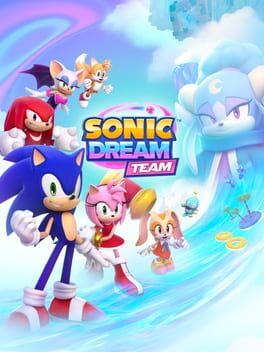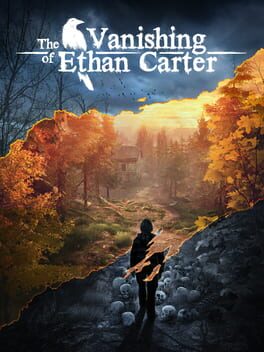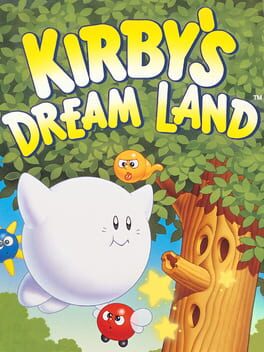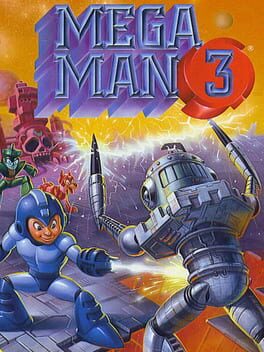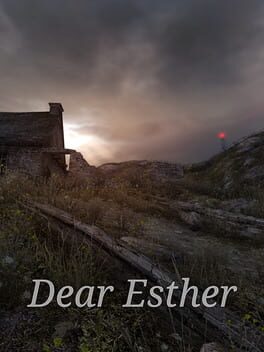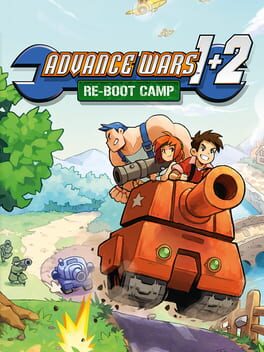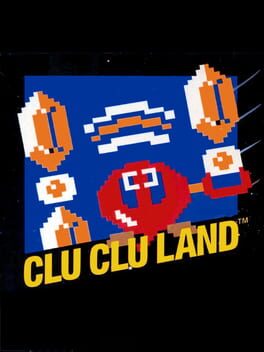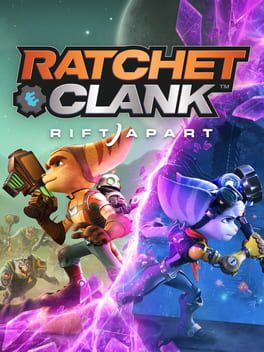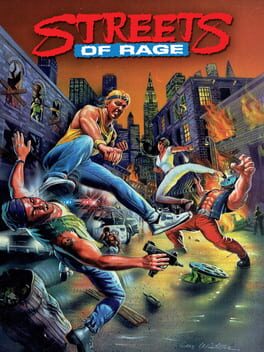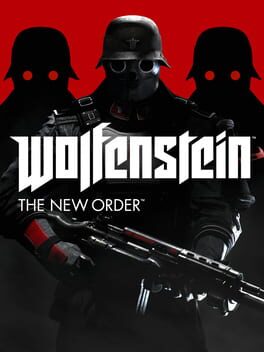2023
2015
Oh, Bloodborne. I'm classically not a guy who's a fan of challenge in video games. Take that how you will, and feel completely free to call me a pussy or a baby if you so choose, but I've always preferred to feel powerful and have a constant stream of progression in games rather than hitting my head against a boss for multiple hours. Bloodborne in some ways, both changed and supported this for me. I say this because obviously, being a From Software game, Bloodborne is certainly a more challenging experience than any other of my favorite games of all time, but with the way that I personally played it, I honestly didn't find it too particularly hard.
Full disclaimer: I cheesed the HELLLLL out of this game. I followed guides, watched videos, grinded my ass off for Blood Echoes so I could be overleveled, etc. Some might say that this invalidates my experience with the game a bunch, as I know most of the draw of Miyazaki’s games is to feel the difficulty of them and git gud, but I find Bloodborne to be a magically well designed game specifically because I was able to pace it to my own enjoyment.
Honestly this game has very little in the way of flaws, so excuse me if I use this review more so to gush about and reflect upon the fond memories that I have for one of my favorite games of all time. I’d actually started Bloodborne multiple times before, and never once even gotten past the brick troll in Central Yarnham. I didn’t understand the importance of using the lock-on or dodge rolling, and kept getting frustrated by the constant loss of my Blood Echoes- so I would just get pissed and quit. I took about a month break and came back to a previously started save, and BOY HOWDY am I glad that I did. It took just a bit of pushing through a tough part in the Cathedral Ward and Old Yarnham, but then I was HOOKED. I played almost 30 hours of this game in under 2 weeks, and every bit of my free time that wasn’t spent playing was on YouTube watching lore videos by Vaati Vidya, Aegon of Astora and Redgrave or researching the ways that other people played the game. I was, and honestly still am, obsessed with the world that Miyazaki and his bois at FromSoft made in this game.
It’s the world of Yarnham that really is the draw for Bloodborne. I’m a huge fan of lore and unique design when it comes to the world of a video game, which is why I’m such a big fan of Control, Bioshock and Xenoblade Chronicles 2. Bloodborne has lore and atmosphere leaking viscously and grotesquely from each and every pore- in the best way possible. It’s kinda tough to piece together the story that’s being told in the game, as everything is told through environmental design and item description snippets with very little in the way of cutscenes and dialogue. While I would probably consider this a downside to any lesser game, the atmosphere that Bloodborne is able to concoct through this both in the game and surrounding it in a more meta name is absolutely intoxicating. It feels like the community are legitimately a group of scholars when discussing the history of Yarnham, applying real life studies and genuine learning concepts to discover what exactly happened with Byrgenwerth, the Great Ones and the Healing Church.
On top of this incredibly deep and engrossing lore, Bloodborne has the visually enthralling and wonderfully detailed physical world to back it up. Each area of the entirely interconnected world is rendered in painstaking detail, with coffins, bones, books and blood strewn about in ridiculously meticulous ways. There’s a wide variety of locales to traverse, with increasingly disturbing content and tone as you progress through the game. Certain areas also have unique gameplay mechanics to spice things up and increase tension, whether that be poisonous lakes, enemies that can do 90% of your health in a second, or having a guy with a gatling gun shooting at you through the entire level. Inside these deliciously realized areas are some of the most creative and grotesque enemy designs in the industry. I can’t stress enough how blown away I was by the variety and uniqueness of each of the enemies in the game, since I’m so used to games having super simple, colorful enemies (Mario, Zelda, Mega Man) or generic goons (Spider-Man, Uncharted, Last of Us). Those games aren’t worse because of their less creative enemy design, but Bloodborne is certainly heightened by the amount of mechanical and visual variety in its foes.
The combat and general mechanics of the game are just as fantastically engrossing as the rest of the aspects that I’ve mentioned. You have a crazy amount of choice in how you want to customize your character, with a laundry list of unique trick weapons at your disposal, blood crystals to power them up, and interchangeable Caryll runes to give you passive benefits. You can pump your stat points into whatever you want, prioritizing certain attributes to match your playstyle to a tee. On top of that there are dozens upon dozens of armor sets, all of which tie into the lore and oh- they look great too. It definitely takes a while to get used to the mechanics of dodging and being incredibly aggressive if you’re not a veteran of the FromSoft game style, but once you push past that initial confusion, you’ll be rewarded with one of the best feeling characters to control in combat in the history of the medium. I found myself understanding the timing of my attacks and dodge-roll invincibility frames so well by the end of my playthrough that I was able to push through many of the later bosses with relative ease (I took down Amygdala and The One Reborn on the first try!).
In the end, Bloodborne is a game I would say is worth a shot for anyone interested in action games. If its difficulty and gameplay don’t hook you, you’ll at least have an appreciation for the world design and atmosphere- but if they DO, you’ll have one of the most engrossing video game worlds to lose yourself in from every angle. I highly recommend checking out VaatiVidya’s few Bloodborne lore videos to start yourself off on the right foot when considering the story, but then jumping into Aegon of Astora’s Let’s Talk Lore series to really dive deep into theories and community engagement. Bloodborne is now one of my favorite games of all time, and - I can’t believe I’m saying this- I absolutely can’t wait to play Dark Souls, Sekiro, and Demon’s Souls. If you’d asked me 3 months ago if I would even consider giving those games a shot I would have laughed at you, but now I’m so fascinated by the FromSoft game design philosophy that I just want to lose myself in more of their worlds.
Bloodborne is a nearly flawless game from every angle.
Full disclaimer: I cheesed the HELLLLL out of this game. I followed guides, watched videos, grinded my ass off for Blood Echoes so I could be overleveled, etc. Some might say that this invalidates my experience with the game a bunch, as I know most of the draw of Miyazaki’s games is to feel the difficulty of them and git gud, but I find Bloodborne to be a magically well designed game specifically because I was able to pace it to my own enjoyment.
Honestly this game has very little in the way of flaws, so excuse me if I use this review more so to gush about and reflect upon the fond memories that I have for one of my favorite games of all time. I’d actually started Bloodborne multiple times before, and never once even gotten past the brick troll in Central Yarnham. I didn’t understand the importance of using the lock-on or dodge rolling, and kept getting frustrated by the constant loss of my Blood Echoes- so I would just get pissed and quit. I took about a month break and came back to a previously started save, and BOY HOWDY am I glad that I did. It took just a bit of pushing through a tough part in the Cathedral Ward and Old Yarnham, but then I was HOOKED. I played almost 30 hours of this game in under 2 weeks, and every bit of my free time that wasn’t spent playing was on YouTube watching lore videos by Vaati Vidya, Aegon of Astora and Redgrave or researching the ways that other people played the game. I was, and honestly still am, obsessed with the world that Miyazaki and his bois at FromSoft made in this game.
It’s the world of Yarnham that really is the draw for Bloodborne. I’m a huge fan of lore and unique design when it comes to the world of a video game, which is why I’m such a big fan of Control, Bioshock and Xenoblade Chronicles 2. Bloodborne has lore and atmosphere leaking viscously and grotesquely from each and every pore- in the best way possible. It’s kinda tough to piece together the story that’s being told in the game, as everything is told through environmental design and item description snippets with very little in the way of cutscenes and dialogue. While I would probably consider this a downside to any lesser game, the atmosphere that Bloodborne is able to concoct through this both in the game and surrounding it in a more meta name is absolutely intoxicating. It feels like the community are legitimately a group of scholars when discussing the history of Yarnham, applying real life studies and genuine learning concepts to discover what exactly happened with Byrgenwerth, the Great Ones and the Healing Church.
On top of this incredibly deep and engrossing lore, Bloodborne has the visually enthralling and wonderfully detailed physical world to back it up. Each area of the entirely interconnected world is rendered in painstaking detail, with coffins, bones, books and blood strewn about in ridiculously meticulous ways. There’s a wide variety of locales to traverse, with increasingly disturbing content and tone as you progress through the game. Certain areas also have unique gameplay mechanics to spice things up and increase tension, whether that be poisonous lakes, enemies that can do 90% of your health in a second, or having a guy with a gatling gun shooting at you through the entire level. Inside these deliciously realized areas are some of the most creative and grotesque enemy designs in the industry. I can’t stress enough how blown away I was by the variety and uniqueness of each of the enemies in the game, since I’m so used to games having super simple, colorful enemies (Mario, Zelda, Mega Man) or generic goons (Spider-Man, Uncharted, Last of Us). Those games aren’t worse because of their less creative enemy design, but Bloodborne is certainly heightened by the amount of mechanical and visual variety in its foes.
The combat and general mechanics of the game are just as fantastically engrossing as the rest of the aspects that I’ve mentioned. You have a crazy amount of choice in how you want to customize your character, with a laundry list of unique trick weapons at your disposal, blood crystals to power them up, and interchangeable Caryll runes to give you passive benefits. You can pump your stat points into whatever you want, prioritizing certain attributes to match your playstyle to a tee. On top of that there are dozens upon dozens of armor sets, all of which tie into the lore and oh- they look great too. It definitely takes a while to get used to the mechanics of dodging and being incredibly aggressive if you’re not a veteran of the FromSoft game style, but once you push past that initial confusion, you’ll be rewarded with one of the best feeling characters to control in combat in the history of the medium. I found myself understanding the timing of my attacks and dodge-roll invincibility frames so well by the end of my playthrough that I was able to push through many of the later bosses with relative ease (I took down Amygdala and The One Reborn on the first try!).
In the end, Bloodborne is a game I would say is worth a shot for anyone interested in action games. If its difficulty and gameplay don’t hook you, you’ll at least have an appreciation for the world design and atmosphere- but if they DO, you’ll have one of the most engrossing video game worlds to lose yourself in from every angle. I highly recommend checking out VaatiVidya’s few Bloodborne lore videos to start yourself off on the right foot when considering the story, but then jumping into Aegon of Astora’s Let’s Talk Lore series to really dive deep into theories and community engagement. Bloodborne is now one of my favorite games of all time, and - I can’t believe I’m saying this- I absolutely can’t wait to play Dark Souls, Sekiro, and Demon’s Souls. If you’d asked me 3 months ago if I would even consider giving those games a shot I would have laughed at you, but now I’m so fascinated by the FromSoft game design philosophy that I just want to lose myself in more of their worlds.
Bloodborne is a nearly flawless game from every angle.
As a fan of Firewatch, Edith Finch and Gone Home, I was excited to jump into another similar game, since it'd been a while since my last experience of this kind.
Initially, I was blown away by the surprisingly gorgeous environments rendered with super high detail textures and lots of organic map design, but after the first few puzzles I realized that it just wasn't going to hook me. The main character isn't particularly interesting, the voice acting on the whole isn't great, and the world is way too open for its own good. You can easily get lost and have a hard time finding the one specific object you have to scan to solve a mystery, which absolutely obliterates the pacing and can lead to some frustrating moments.
The mystery solving gameplay in itself is... fine, but just super basic. By the ending puzzles it starts to feel super repetitive, and unfortunately the story convolutes itself 30 ways from Sunday, which really didn't compel me through the narrative. I didn't care for any of the characters because they all just have one note personalities shown through flashbacks, and the ridiculous amount of strange names and fantasy concepts told in the mini stories just led to confusion. I'm sure there's a more interesting larger meta narrative surrounding that, but if so it completely missed me.
Repetitive gameplay, poor pacing, an empty but gorgeous world and uninteresting story don't lead to a walking sim experience that I think is worth your time. Go play any of the three games I mentioned up at the top of the review if you want a much more unique and streamlined experience in this genre.
Initially, I was blown away by the surprisingly gorgeous environments rendered with super high detail textures and lots of organic map design, but after the first few puzzles I realized that it just wasn't going to hook me. The main character isn't particularly interesting, the voice acting on the whole isn't great, and the world is way too open for its own good. You can easily get lost and have a hard time finding the one specific object you have to scan to solve a mystery, which absolutely obliterates the pacing and can lead to some frustrating moments.
The mystery solving gameplay in itself is... fine, but just super basic. By the ending puzzles it starts to feel super repetitive, and unfortunately the story convolutes itself 30 ways from Sunday, which really didn't compel me through the narrative. I didn't care for any of the characters because they all just have one note personalities shown through flashbacks, and the ridiculous amount of strange names and fantasy concepts told in the mini stories just led to confusion. I'm sure there's a more interesting larger meta narrative surrounding that, but if so it completely missed me.
Repetitive gameplay, poor pacing, an empty but gorgeous world and uninteresting story don't lead to a walking sim experience that I think is worth your time. Go play any of the three games I mentioned up at the top of the review if you want a much more unique and streamlined experience in this genre.
2020
I can't begin to say how disappointed I am by this game. I will admit that a large share of the issues I have with it come from the performance drop of playing on a base PlayStation 4, but I don't think that should take away from the fact that I DID have these issues.
This game is functionally BORKED on PS4. Texture pop in, impossibly low resolution, visual tears, freezes, crashes, the works. I fortunately haven't had visual bugs with characters and such, but the performance of the game is legitimately worse than honestly any other AAA game I've played, it really isn't even close. When exploring Night City (which is my favorite part of an open world game), I had to avoid combat and areas with lots of NPCs if I wanted the game to run at a reasonable framerate. This is a HUUUUGE issue, because Night City is filled with people chilling and gang members who want your ass beat.
These visual and performance issues take away from the strongest aspect of the game, the world design and fluidity of the experience. Night City is probably the most intricately designed open world I've explored before, with many layers, tunnels and pathways for you to dig through- just in the first area! But unfortunately when the visuals of the world are filtered through a low framerate and sub 720p, it becomes incredibly difficult to enjoy them.
But honestly, low resolution or unstable framerate aside, I'm not sure how much I would like this game. I don't really think the story (what I played of it) is well paced- they throw an absolutely ludicrous number of new characters at you in the first hours of this game that it was impossible for me to feel any genuine connection to them, save for Jackie.
This also feeds into the pacing of the gameplay, which once it leaves the linear opening, is incredibly overwhelming. Gone are the open world design philosophies of games like Red Dead Redemption, Far Cry 3 or even Marvel's Spider-Man, where new side-quest and collectible types are doled out through the main campaign so you are given time to adapt to each one and familiarize yourself with what everything means. You jump into the Watson area of Night City and are instantly bombarded with dozens of map icons, none of which are introduced organically through the story.
I also just think that this game doesn't do anything special as an open world western RPG that hasn't been done before or better in its contemporaries. Painting everything in a slick coat of Cyberpunk-styled paint is all well and good, but if the gameplay feels formulaic there's very little to set it apart as the next evolution in open-world gaming that we were essentially promised through the years of marketing. Unfortunately, Cyberpunk is base level when it comes to its RPG gameplay. It has mediocre gun combat and even worse melee combat, decent driving, shoe-horned in stealth, shallow hacking, okay side-quest formats, and poorly laid out, not very impactful upgrades.
As I was walking around Night City taking in what I could of the world, characters and lore, it just made me want to hop back into other open world RPGs. It doesn't quite have the flexibility of Skyrim, the zaniness of GTA, FarCry or Just Cause or the creativity of Fallout, but falls in an okay middle ground that just comes off as samey.
This game should either A) have not released on the base last gen consoles or B) had another year of development, because there's just blatant levels of polish that aren't applied here, and I have no clue how some of these issues made it past QA testing.
I'm not completely regretting my purchase, because I got to be in the ground floor for the game and its discussion, and I split the price with a friend, making it not a huge financial blow for such an underwhelming product. If you don't have access to a good PC or an Xbox Series X, wait on this game. There are major technical issues on the Series S and PS5 versions as well, though the game looks far better. Price drops, patches, updates and DLC are innevitable, and I hope CDPR can turn this game around in the next few years, but as is this is genuinely not a game worth spending your money on.
This game is functionally BORKED on PS4. Texture pop in, impossibly low resolution, visual tears, freezes, crashes, the works. I fortunately haven't had visual bugs with characters and such, but the performance of the game is legitimately worse than honestly any other AAA game I've played, it really isn't even close. When exploring Night City (which is my favorite part of an open world game), I had to avoid combat and areas with lots of NPCs if I wanted the game to run at a reasonable framerate. This is a HUUUUGE issue, because Night City is filled with people chilling and gang members who want your ass beat.
These visual and performance issues take away from the strongest aspect of the game, the world design and fluidity of the experience. Night City is probably the most intricately designed open world I've explored before, with many layers, tunnels and pathways for you to dig through- just in the first area! But unfortunately when the visuals of the world are filtered through a low framerate and sub 720p, it becomes incredibly difficult to enjoy them.
But honestly, low resolution or unstable framerate aside, I'm not sure how much I would like this game. I don't really think the story (what I played of it) is well paced- they throw an absolutely ludicrous number of new characters at you in the first hours of this game that it was impossible for me to feel any genuine connection to them, save for Jackie.
This also feeds into the pacing of the gameplay, which once it leaves the linear opening, is incredibly overwhelming. Gone are the open world design philosophies of games like Red Dead Redemption, Far Cry 3 or even Marvel's Spider-Man, where new side-quest and collectible types are doled out through the main campaign so you are given time to adapt to each one and familiarize yourself with what everything means. You jump into the Watson area of Night City and are instantly bombarded with dozens of map icons, none of which are introduced organically through the story.
I also just think that this game doesn't do anything special as an open world western RPG that hasn't been done before or better in its contemporaries. Painting everything in a slick coat of Cyberpunk-styled paint is all well and good, but if the gameplay feels formulaic there's very little to set it apart as the next evolution in open-world gaming that we were essentially promised through the years of marketing. Unfortunately, Cyberpunk is base level when it comes to its RPG gameplay. It has mediocre gun combat and even worse melee combat, decent driving, shoe-horned in stealth, shallow hacking, okay side-quest formats, and poorly laid out, not very impactful upgrades.
As I was walking around Night City taking in what I could of the world, characters and lore, it just made me want to hop back into other open world RPGs. It doesn't quite have the flexibility of Skyrim, the zaniness of GTA, FarCry or Just Cause or the creativity of Fallout, but falls in an okay middle ground that just comes off as samey.
This game should either A) have not released on the base last gen consoles or B) had another year of development, because there's just blatant levels of polish that aren't applied here, and I have no clue how some of these issues made it past QA testing.
I'm not completely regretting my purchase, because I got to be in the ground floor for the game and its discussion, and I split the price with a friend, making it not a huge financial blow for such an underwhelming product. If you don't have access to a good PC or an Xbox Series X, wait on this game. There are major technical issues on the Series S and PS5 versions as well, though the game looks far better. Price drops, patches, updates and DLC are innevitable, and I hope CDPR can turn this game around in the next few years, but as is this is genuinely not a game worth spending your money on.
2008
1992
This game is very conflicting to me. I absolutely appreciate the fact that it started an iconic franchise and the career of Sakurai, but frankly this game serves only as a spring board for more compelling and interesting games.
As I've played more and more games in the Kirby franchise, I've become more in tune to exactly why it is that I feel that they are so poorly designed and naturally, most of that starts here. Lack of momentum and traversal options make the movement sluggish, drab and repetitive. This is especially heightened by the poor level design, which remains unmemorable and unengaging for the entire short play time of the game. The platform and enemy placement simply do not entice the player to interact with them in any meaningful way, leaving no incentive to experiment, explore or chase technical mastery.
Dream Land a very technically impressive game though, without a doubt. The expressive spritework for Kirby and Dedede especially are the highlights, combined with surprisingly detailed backgrounds and lots of fun little sparks and stars scattering the levels. Unfortunately though, being an impressive Game Boy game doesn't hold enough water to a modern eye to be worth much in terms of scoring or enjoyment.
At 5 levels, it took me 32 minutes to complete this game. Short length isn't really one of my detractors from Dream Land, however, as my disconnect and disinterest with what the game was doing ended up making it feel as if the game was dragging.
As I've played more and more games in the Kirby franchise, I've become more in tune to exactly why it is that I feel that they are so poorly designed and naturally, most of that starts here. Lack of momentum and traversal options make the movement sluggish, drab and repetitive. This is especially heightened by the poor level design, which remains unmemorable and unengaging for the entire short play time of the game. The platform and enemy placement simply do not entice the player to interact with them in any meaningful way, leaving no incentive to experiment, explore or chase technical mastery.
Dream Land a very technically impressive game though, without a doubt. The expressive spritework for Kirby and Dedede especially are the highlights, combined with surprisingly detailed backgrounds and lots of fun little sparks and stars scattering the levels. Unfortunately though, being an impressive Game Boy game doesn't hold enough water to a modern eye to be worth much in terms of scoring or enjoyment.
At 5 levels, it took me 32 minutes to complete this game. Short length isn't really one of my detractors from Dream Land, however, as my disconnect and disinterest with what the game was doing ended up making it feel as if the game was dragging.
1990
Y'know what, this is better than Mega Man 2. It lacks the epic opening intro, but other than that I just find this to be a much more engaging experience than 2. The additions of Rush and Proto Man make the Mega Man world feel more full than before, and boosting your moveset with the slide makes Mega Man himself feel much less like a clunky metal hunk and more like an actual hero who can do badass stuff.
The levels are more detailed, there's a hearty dose of Mega Man 1 and 2 callbacks, and everything just feels more refined. I enjoyed the platforming challenges a lot more than in either of the previous games, and the balance of items is VASSSSSTLY improved.
Not much more to say since this still almost identical to Mega Man 2, but I really do think this is the superior game, though not by a giant margin.
The levels are more detailed, there's a hearty dose of Mega Man 1 and 2 callbacks, and everything just feels more refined. I enjoyed the platforming challenges a lot more than in either of the previous games, and the balance of items is VASSSSSTLY improved.
Not much more to say since this still almost identical to Mega Man 2, but I really do think this is the superior game, though not by a giant margin.
1983
This is a peculiar one. Donkey Kong being a mildly obnoxious obstacle is the only reason this is even called a DK game- otherwise its just a really weird Space Invaders/ Galaga knockoff. There are no barrels, bananas, Mario... but honestly that isn't a bad thing. At this point in time the Donkey Kong franchise was known for being experimental and inconsistent, much like most major series at the time, such as Super Mario Bros. and The Legend of Zelda.
It's cool to see Nintendo try their hand at an upwards shooter/ defense game, and the skin of being an exterminator, shooting down bugs and snakes while being berated by a flipping GORILLA is just wacky enough to be charming.
Really though, there's very little reason to play this game. The NES version has two- count 'em- TWO stages that cycle with minor variations, and the enemy variety is really piss-poor. I will give credit where credit is due however, the multitasking that you have to do with guarding the flowers, keeping DK at bay and managing the oncoming bug and snake waves is pretty satisfying, I just wish it was placed in a more robust and mechanically interesting package.
It's cool to see Nintendo try their hand at an upwards shooter/ defense game, and the skin of being an exterminator, shooting down bugs and snakes while being berated by a flipping GORILLA is just wacky enough to be charming.
Really though, there's very little reason to play this game. The NES version has two- count 'em- TWO stages that cycle with minor variations, and the enemy variety is really piss-poor. I will give credit where credit is due however, the multitasking that you have to do with guarding the flowers, keeping DK at bay and managing the oncoming bug and snake waves is pretty satisfying, I just wish it was placed in a more robust and mechanically interesting package.
1996
Super Mario 64 is a game that is simultaneously far ahead of its time, but also very clearly shows its age in some areas. The controls are just as fluid and razor-tight as Odyssey is today, with the backflip, triple jump, wall jump and long jump feeling wonderful to pull off.
The soundtrack is also classic as hell, with nearly every track being super iconic. The only issue is that those songs are re-used in multiple stages, leaving some of the later worlds feeling less unique because of it.
I also really love the flexibility and exploration that the game allows the player to have, with stars accessible in multiple orders and tons of hidden stars and secret levels scattered across the castle hub world.
The real issue with the age however, is the camera. This thing is just an obstacle, with the set angles feeling super restrictive and the locked camera movements when in certain areas preventing you from seeing where you're heading- leading to some unfair death. I also don't think that the game has consistent level design, with some of the later levels feeling unfair to traverse due to one hit kills that kick you out of the painting and send you to the start of the world. I also think that some of the visuals don't quite hold up, with really stretched out textures, and jagged, almost unfinished areas in later worlds.
I do still really enjoy this game, even with its glaring faults that provide a pretty significant hurdle for a modern gamer to get over. With an improved camera, polished visuals and some modern game design philosophies, this game would feel new today- its just that far ahead of its contemporaries. 8/10
The soundtrack is also classic as hell, with nearly every track being super iconic. The only issue is that those songs are re-used in multiple stages, leaving some of the later worlds feeling less unique because of it.
I also really love the flexibility and exploration that the game allows the player to have, with stars accessible in multiple orders and tons of hidden stars and secret levels scattered across the castle hub world.
The real issue with the age however, is the camera. This thing is just an obstacle, with the set angles feeling super restrictive and the locked camera movements when in certain areas preventing you from seeing where you're heading- leading to some unfair death. I also don't think that the game has consistent level design, with some of the later levels feeling unfair to traverse due to one hit kills that kick you out of the painting and send you to the start of the world. I also think that some of the visuals don't quite hold up, with really stretched out textures, and jagged, almost unfinished areas in later worlds.
I do still really enjoy this game, even with its glaring faults that provide a pretty significant hurdle for a modern gamer to get over. With an improved camera, polished visuals and some modern game design philosophies, this game would feel new today- its just that far ahead of its contemporaries. 8/10
2012
I'd consider myself a pretty big walking sim fan, but I feel like Dear Esther is the game that really points out why so many people are turned off by the genre. Its overly simplistic in its interactibility and controls, while simultaneously being super convoluted with its storytelling.
It's briefness and simplicity are of course the draw and entirely by design, pushing the medium of gaming to its barest requirements, and while I think the game is interesting on a meta level because of that, in execution I find it to be solidly underwhelming. I wish there were some more secrets to find in the really well rendered environments, because every time I went off the beaten path I just found nothing but a dead end.
The story is also too cryptically told for its own good, delivering a simple narrative through over-written prose. There isn't a particularly satisfying ending or engaging twist to it all either, meaning I really just felt empty as I finished it up.
Gone Home, What Remains of Edith Finch, Firewatch, and (while I hate to say it) The Vanishing of Ethan Carter all offer much more to grab onto in terms of game design and storytelling, and Dear Esther just feels empty in comparison.
It's briefness and simplicity are of course the draw and entirely by design, pushing the medium of gaming to its barest requirements, and while I think the game is interesting on a meta level because of that, in execution I find it to be solidly underwhelming. I wish there were some more secrets to find in the really well rendered environments, because every time I went off the beaten path I just found nothing but a dead end.
The story is also too cryptically told for its own good, delivering a simple narrative through over-written prose. There isn't a particularly satisfying ending or engaging twist to it all either, meaning I really just felt empty as I finished it up.
Gone Home, What Remains of Edith Finch, Firewatch, and (while I hate to say it) The Vanishing of Ethan Carter all offer much more to grab onto in terms of game design and storytelling, and Dear Esther just feels empty in comparison.
1984
Clu Clu Land has barely any reason to exist. It was made to capitalize on the maze game craze that started with Pac-Man, but took such a different approach to that style of game design that it just fell flat in almost every regard.
You're supposed to explore a "maze" of hidden objects between a series of poles and expose these weird Zelda rupee-looking things, which is NOT self explanatory and ends up feeling ridiculously abstract in a distracting way.
The control scheme of swinging yourself around poles is novel, but when combined with the character automatically moving forward and the weird task that you're assigned to do, it just is not fun to play.
This is a weird purple-y blemish on Nintendo's history. It has hardly been revisited or reflected on in any capacity, and there's VERY little incentive to want to check it out in the modern day, since the gameplay is just dwarfed by the games it tried to improve on.
You're supposed to explore a "maze" of hidden objects between a series of poles and expose these weird Zelda rupee-looking things, which is NOT self explanatory and ends up feeling ridiculously abstract in a distracting way.
The control scheme of swinging yourself around poles is novel, but when combined with the character automatically moving forward and the weird task that you're assigned to do, it just is not fun to play.
This is a weird purple-y blemish on Nintendo's history. It has hardly been revisited or reflected on in any capacity, and there's VERY little incentive to want to check it out in the modern day, since the gameplay is just dwarfed by the games it tried to improve on.
Coming directly off my one day BINGE of Ratchet & Clank (2016), and hearing some mixed things from a few sources (namely Videogamedunkey and Abram Buehner), I honestly expected Ratchet & Clank: Rift Apart to be an underwhelming sequel not worthy of the PS5 exclusivity hype. The truth of the matter though, is that this is genuinely one of the highest production value and all around complete and satisfying video game experiences I’ve ever had, and I couldn’t be happier about it.
Rift Apart hits the highest marks on essentially any metric you can throw at it. It’s inarguably one of the highest fidelity games the industry has ever seen, with immaculate character detail and texturework and genuinely breathtaking lighting effects that somehow look even better in action. This is supported by amazing animation for… well everything, including fluid character movement, off-the-charts particle effects, HUGE scale set piece moments and IMMENSELY impactful weaponry shots- all of which run at a blindingly smooth 60 FPS in performance ray-tracing mode. While the titular rift mechanics of the game may not alter the core gameplay all that much, the visual variety and creativity that went into creating the technical marvel of instantly zapping between locations is engaging and clearly utilizes the PS5’s SSD a lot.
The best way I can describe the core combat gameplay is tactile. The previously mentioned weapon animation is combined with DualSense rumble and sound design to give you a lineup of weapons that all feel amazing to utilize, especially once they’re upgraded and you’re fighting in more complex battles. It’s difficult to understate what a perfect gameplay loop the folks at Insomniac have created with the combat, upgrades and exploration all feeding into one another. There’s always a sense that you’re being rewarded for experimenting with your arsenal, which not only allows you to upgrade your weapons even further and become better at the gameplay, but have more fun with each combat encounter as you learn which weapons synergize in satisfying ways. When you have a battle with dozens upon dozens of enemies with particle effects and explosions happening everywhere but feel completely in control of how you’re tackling the scenario, that’s really videogame magic.
This game is also leaps and bounds more creative and charming than the 2016 reboot. The characters and worlds, even when gimmicky, exude personality and move the series forward in really fun ways. All four of our main protagonists, including the titular Ratchet and Clank and their alternate universe counterparts Rivet and Kit, deal with genuinely interesting personal issues, which gives the over-the-top, campy story a much more grounded and emotional impact. Rivet finds herself locked a loop of being a hero that can never win, leading her to believe that she doesn’t have it within her to make friends and rise triumphant. Her softer personal side is hidden behind a facade of swashbuckling suave, and watching her come to terms with trust and friendship was emotionally riveting, pun ENTIRELY intended. Kit on the other hand sees herself as dangerous and untrustworthy, as she unintentionally hurt others in the past. I loved watching her slowly open up with the ever-hopeful Ratchet literally at her back, and her character arc intersects with Rivet’s in a powerful way. I definitely enjoyed being introduced to Rivet and Kit, and I can’t imagine the series moving forward without them.
Emperor Nefarious is also LEAGUES more intimidating and exacting than his PhD counterpart, making the stakes feel higher and the pressure greater for you to actually save the world. Outside of the obvious core characters though, this game excels intensely well in creating sidequests with memorable one-off characters, and having a ridiculously fun supporting cast. I think back to Tulio’s ridiculous honey/suffering tower defense, having a heart-to-heart with the Fixer, and discovering the abandoned dimension of Junk Bot and Juice. The Morts have some really funny dialogue, Ms. Zurkon and Zurkon Jr. drip charm with every line, and Phantom, Quantum and Pierre offer much more interesting personalities and backgrounds than their main-universe counterparts.
Does it feel like a game that couldn’t run compromised on a PS4 or that utilizes every unique aspect of the PS5’s capabilities? No, but I don’t necessarily think that’s a fair metric to score a game on. Rift Apart would be a solidly different experience if it were on PS4 though, as the rift tethers and non-existent load times would push the hardware past its limits and make that console roar even louder than it already does. Very few games ever reach the harmony between hardware gimmick utilization and ideal gameplay, especially not ones released less than a year into a console’s lifecycle. For an early PS5 game and one of the first true exclusives on the platform though, this game does everything it needs to. The gorgeous visuals and blisteringly speedy load times are at the peak of games being released at the moment, and the high polish of the experience overall makes this a stand-out, must play for PS5 owners (not that there’s much competition).
Unfortunately, Rift Apart still has a few holes in terms of glitches and bugs. I had my fair share of interactions with janky geometry, especially when rocketing around with the rocket boots, clipped through platforms a handful of times, saw the occasional failed animation, and even got stuck in a pocket dimension one time and had to reload an older save. It’s a testament to the overall performance of the game and its load times then, that these moments hardly marred my experience in the slightest. With a few patches, this game may end up being technically flawless.
Most importantly though, this is a game I can easily recommend to players of any skill level. The relative simplicity of the Ratchet gameplay formula easily works as baby’s first action platformer, while Ratchet veterans will enjoy blasting through hordes of enemies, scouring the environments for secrets and soaking in the gorgeous visuals and audio. This is all boosted even further by the game’s in-depth accessibility options, that allow players of any ability to tailor the experience to fit their needs.
Ratchet & Clank: Rift Apart is a fantastic game. It boasts top of the line visuals, gratifying combat, engaging exploration, wonderful characters and awesome accessibility options. The team at Insomniac should be proud of what they made, a game that sets the bar ludicrously high with its quality in every possible category. Does it reinvent the wheel? No, but there’s something to be said for taking the wheel and polishing it until it gleams.
Rift Apart hits the highest marks on essentially any metric you can throw at it. It’s inarguably one of the highest fidelity games the industry has ever seen, with immaculate character detail and texturework and genuinely breathtaking lighting effects that somehow look even better in action. This is supported by amazing animation for… well everything, including fluid character movement, off-the-charts particle effects, HUGE scale set piece moments and IMMENSELY impactful weaponry shots- all of which run at a blindingly smooth 60 FPS in performance ray-tracing mode. While the titular rift mechanics of the game may not alter the core gameplay all that much, the visual variety and creativity that went into creating the technical marvel of instantly zapping between locations is engaging and clearly utilizes the PS5’s SSD a lot.
The best way I can describe the core combat gameplay is tactile. The previously mentioned weapon animation is combined with DualSense rumble and sound design to give you a lineup of weapons that all feel amazing to utilize, especially once they’re upgraded and you’re fighting in more complex battles. It’s difficult to understate what a perfect gameplay loop the folks at Insomniac have created with the combat, upgrades and exploration all feeding into one another. There’s always a sense that you’re being rewarded for experimenting with your arsenal, which not only allows you to upgrade your weapons even further and become better at the gameplay, but have more fun with each combat encounter as you learn which weapons synergize in satisfying ways. When you have a battle with dozens upon dozens of enemies with particle effects and explosions happening everywhere but feel completely in control of how you’re tackling the scenario, that’s really videogame magic.
This game is also leaps and bounds more creative and charming than the 2016 reboot. The characters and worlds, even when gimmicky, exude personality and move the series forward in really fun ways. All four of our main protagonists, including the titular Ratchet and Clank and their alternate universe counterparts Rivet and Kit, deal with genuinely interesting personal issues, which gives the over-the-top, campy story a much more grounded and emotional impact. Rivet finds herself locked a loop of being a hero that can never win, leading her to believe that she doesn’t have it within her to make friends and rise triumphant. Her softer personal side is hidden behind a facade of swashbuckling suave, and watching her come to terms with trust and friendship was emotionally riveting, pun ENTIRELY intended. Kit on the other hand sees herself as dangerous and untrustworthy, as she unintentionally hurt others in the past. I loved watching her slowly open up with the ever-hopeful Ratchet literally at her back, and her character arc intersects with Rivet’s in a powerful way. I definitely enjoyed being introduced to Rivet and Kit, and I can’t imagine the series moving forward without them.
Emperor Nefarious is also LEAGUES more intimidating and exacting than his PhD counterpart, making the stakes feel higher and the pressure greater for you to actually save the world. Outside of the obvious core characters though, this game excels intensely well in creating sidequests with memorable one-off characters, and having a ridiculously fun supporting cast. I think back to Tulio’s ridiculous honey/suffering tower defense, having a heart-to-heart with the Fixer, and discovering the abandoned dimension of Junk Bot and Juice. The Morts have some really funny dialogue, Ms. Zurkon and Zurkon Jr. drip charm with every line, and Phantom, Quantum and Pierre offer much more interesting personalities and backgrounds than their main-universe counterparts.
Does it feel like a game that couldn’t run compromised on a PS4 or that utilizes every unique aspect of the PS5’s capabilities? No, but I don’t necessarily think that’s a fair metric to score a game on. Rift Apart would be a solidly different experience if it were on PS4 though, as the rift tethers and non-existent load times would push the hardware past its limits and make that console roar even louder than it already does. Very few games ever reach the harmony between hardware gimmick utilization and ideal gameplay, especially not ones released less than a year into a console’s lifecycle. For an early PS5 game and one of the first true exclusives on the platform though, this game does everything it needs to. The gorgeous visuals and blisteringly speedy load times are at the peak of games being released at the moment, and the high polish of the experience overall makes this a stand-out, must play for PS5 owners (not that there’s much competition).
Unfortunately, Rift Apart still has a few holes in terms of glitches and bugs. I had my fair share of interactions with janky geometry, especially when rocketing around with the rocket boots, clipped through platforms a handful of times, saw the occasional failed animation, and even got stuck in a pocket dimension one time and had to reload an older save. It’s a testament to the overall performance of the game and its load times then, that these moments hardly marred my experience in the slightest. With a few patches, this game may end up being technically flawless.
Most importantly though, this is a game I can easily recommend to players of any skill level. The relative simplicity of the Ratchet gameplay formula easily works as baby’s first action platformer, while Ratchet veterans will enjoy blasting through hordes of enemies, scouring the environments for secrets and soaking in the gorgeous visuals and audio. This is all boosted even further by the game’s in-depth accessibility options, that allow players of any ability to tailor the experience to fit their needs.
Ratchet & Clank: Rift Apart is a fantastic game. It boasts top of the line visuals, gratifying combat, engaging exploration, wonderful characters and awesome accessibility options. The team at Insomniac should be proud of what they made, a game that sets the bar ludicrously high with its quality in every possible category. Does it reinvent the wheel? No, but there’s something to be said for taking the wheel and polishing it until it gleams.
1991
I really have no experience with the beat em' up genre, and as I'm trying to expand my gaming horizons and test out franchises and game styles I haven't gotten into before, Streets of Rage felt like a good starting place for what in my eyes seems to be a pretty basic and samey genre.
I played this through the Sega Genesis Classics collection, which offers rewind, speed-up and local/online co-op, and it's more than likely the absolute perfect way to experience this game. Everything about Streets of Rage holds up exceedingly well, it just feels really basic from what your characters can do- just a couple grabs, a jump kick and a punch combo.
Streets of Rage really has a ton of personality in its visuals, music and characters. It has a cliche premise of walking the dirty streets clobbering waves of thugs, but the over the top, ridiculously radical intro and detailed backgrounds make it just a totally tubular audio/visual experience.
There's probably a hidden layer of depth that I don't know about considering I haven't played the game longer than a single playthrough, but as it stands Streets of Rage is brief, rad and satisfying, but just a little bit basic for my taste.
Very interested to see how the series grows in 2 and 3 which are also in this collection!
I played this through the Sega Genesis Classics collection, which offers rewind, speed-up and local/online co-op, and it's more than likely the absolute perfect way to experience this game. Everything about Streets of Rage holds up exceedingly well, it just feels really basic from what your characters can do- just a couple grabs, a jump kick and a punch combo.
Streets of Rage really has a ton of personality in its visuals, music and characters. It has a cliche premise of walking the dirty streets clobbering waves of thugs, but the over the top, ridiculously radical intro and detailed backgrounds make it just a totally tubular audio/visual experience.
There's probably a hidden layer of depth that I don't know about considering I haven't played the game longer than a single playthrough, but as it stands Streets of Rage is brief, rad and satisfying, but just a little bit basic for my taste.
Very interested to see how the series grows in 2 and 3 which are also in this collection!
This game honestly really really surprised me. Not only with its quality and creativity, but with just how much damn heart it has. I usually steer away from pure first person shooter campaigns, as I generally feel like they're lacking more depth and nuance that you get out of RPGs or even adventure games. Wolfenstein: The New Order doesn't reinvent the wheel when it comes to gameplay philosophy, in fact it's kind of the opposite, but it places that classically designed gameplay loop into the context of a game with a great story, well rounded characters and modern production value.
Unfortunately this game starts off on the wrong foot, with a relatively generic opening scene. It introduces the villain and a couple of the side characters as well as the basic mechanics, but on the whole it feels vastly out of place from the rest of the game. I was ready to put it down and write the game off as a base level FPS campaign, but I pushed through that first couple sections and was treated with a wonderful surprise.
There's a moment pretty early on in which you're introduced to the central area of the game, a place that acts as a base to return to throughout the story and introduces you to a whole host of characters that flesh out the cast. This completely recontextualizes your actions and motivation for the rest of the game, and made me connect to the world a lot more.
It's at this point where the game also takes a turn in terms of story creativity, introducing more science fiction type elements that kept me even more engaged when mixed with the historical rewrite of the Nazis winning WWII. The character Set brings with him a whole host of lore expansion that I found to be super fascinating, and wish it had been delved into a little more- or at least wish I was given the opportunity to do side quests and such related to it so I could learn more. The game handles its lore in a great way, laying newspaper article clippings around the environment. This feels so much more natural than random notes I.E. The Last of Us or audiologs in Bioshock (both of which I still LOVE), so I liked that.
The game has great pacing in terms of environments, jumping around incredibly varied locales and set pieces that mean each chapter has their own unique feel. Unfortunately this comes with the side effect of the progression of the story feeling rather convenient at times, with characters like Anya and Caroline just spewing expository dialogue while they tell you exactly where when and how you're going to do your next mission. This is pretty ridiculous when you consider that the Kreisau Circle is going up against essentially the rest of the planet, so it feels a bit underwhelming that they can just figure out how to get into the most secure locations on the planet just by decoding audio or something.
Surprisingly enough, while it's certainly solid and doesn't have any glaring issues, the First Person Shooter gameplay was actually my least favorite aspect of the game. It's fun to run around the unique levels that the game jumps between through the campaign, but I just found myself not caring too much for the gunplay itself. I did enjoy dual-wielding two of the same weapon at the same time, as well as the introduction of the laserkraftwerk, which reminded me a lot of Half-Life. Honestly a lot of this game reminds me of the Half-Life franchise, in terms of pacing, mechanics and level design- though that's a compliment- they learned from the best of the best.
In the end, while I might not LOVE the combat and felt like the progression was convenient at times, the game's strengths lie in the absolutely wonderful cast of supporting characters with incredible performances, it's unique concept of rewritten history, and the variety of locations and set pieces that you blast your way through. It's a dumb, explosion filled romp in some places, but damn does it sure have heart.
Unfortunately this game starts off on the wrong foot, with a relatively generic opening scene. It introduces the villain and a couple of the side characters as well as the basic mechanics, but on the whole it feels vastly out of place from the rest of the game. I was ready to put it down and write the game off as a base level FPS campaign, but I pushed through that first couple sections and was treated with a wonderful surprise.
There's a moment pretty early on in which you're introduced to the central area of the game, a place that acts as a base to return to throughout the story and introduces you to a whole host of characters that flesh out the cast. This completely recontextualizes your actions and motivation for the rest of the game, and made me connect to the world a lot more.
It's at this point where the game also takes a turn in terms of story creativity, introducing more science fiction type elements that kept me even more engaged when mixed with the historical rewrite of the Nazis winning WWII. The character Set brings with him a whole host of lore expansion that I found to be super fascinating, and wish it had been delved into a little more- or at least wish I was given the opportunity to do side quests and such related to it so I could learn more. The game handles its lore in a great way, laying newspaper article clippings around the environment. This feels so much more natural than random notes I.E. The Last of Us or audiologs in Bioshock (both of which I still LOVE), so I liked that.
The game has great pacing in terms of environments, jumping around incredibly varied locales and set pieces that mean each chapter has their own unique feel. Unfortunately this comes with the side effect of the progression of the story feeling rather convenient at times, with characters like Anya and Caroline just spewing expository dialogue while they tell you exactly where when and how you're going to do your next mission. This is pretty ridiculous when you consider that the Kreisau Circle is going up against essentially the rest of the planet, so it feels a bit underwhelming that they can just figure out how to get into the most secure locations on the planet just by decoding audio or something.
Surprisingly enough, while it's certainly solid and doesn't have any glaring issues, the First Person Shooter gameplay was actually my least favorite aspect of the game. It's fun to run around the unique levels that the game jumps between through the campaign, but I just found myself not caring too much for the gunplay itself. I did enjoy dual-wielding two of the same weapon at the same time, as well as the introduction of the laserkraftwerk, which reminded me a lot of Half-Life. Honestly a lot of this game reminds me of the Half-Life franchise, in terms of pacing, mechanics and level design- though that's a compliment- they learned from the best of the best.
In the end, while I might not LOVE the combat and felt like the progression was convenient at times, the game's strengths lie in the absolutely wonderful cast of supporting characters with incredible performances, it's unique concept of rewritten history, and the variety of locations and set pieces that you blast your way through. It's a dumb, explosion filled romp in some places, but damn does it sure have heart.
